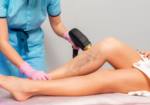The Role of Wound Care Supplies in Successful Healing Processes

When it comes to healing wounds, the right tools and supplies can make all the difference. From bandages and dressings to antiseptics and specialized tools, wound care supplies play a crucial role in promoting fast and effective healing. Let’s delve into the importance of these supplies and how they contribute to successful wound management.
Understanding Wounds and Their Healing Process
Before we discuss the role of care supplies, it’s essential to understand what a wound is and how it heals. A wound is any damage or break in the surface of the skin. The healing process involves a complex series of events that restore the damaged tissue.
The wound-healing process consists of four main stages: hemostasis (stopping the bleeding), inflammation (cleaning the wound), proliferation (filling and covering the wound), and maturation (strengthening the new tissue). Each stage requires specific care and attention, which is where wound healing supplies come in.
Understanding Wound Healing Supplies
Care supplies encompassing a wide range of medical products designed to aid in the treatment and management of different types of wounds. These supplies may include sterile dressings, gauze pads, adhesive bandages, wound cleansers, antimicrobial agents, wound closure strips, and more. Each of these supplies serves a specific purpose in wound healing and is carefully selected based on the wound’s type, size, and severity.
The Significance of Wound Care Supplies
Wound healing supplies are not only crucial for providing immediate relief and protection to a wound but also for facilitating each stage of the healing process.
Preventing Infections with Proper Wound Care
One of the primary functions of wound healing supplies is to prevent infections, which can significantly hinder the healing process. Keeping the wound clean and protected from harmful bacteria and microorganisms is essential in reducing the risk of infection. Antiseptic solutions, wound cleansers, and sterile dressings are crucial components of wound healing supplies that create an optimal environment for healing while minimizing the risk of infection.
Promoting Moist Wound Healing
Maintaining an appropriate level of moisture in the wound is vital for successful healing. Too much moisture or excessive dryness can impede the natural healing process. Wound healing supplies such as hydrogel dressings and moist wound healing dressings help create an ideal moist environment, which facilitates cell migration and promotes tissue regeneration.
Accelerating Healing with Advanced Dressings
Advanced wound dressings have revolutionized the wound care landscape. These innovative supplies, such as foam dressings, alginate dressings, and collagen dressings, are designed to accelerate the healing process for chronic or complex wounds. They can aid in debridement, absorb excess exudate, and provide a protective barrier, which can significantly enhance healing outcomes.
Managing Wound Exudate
Wound exudate, the fluid that oozes out from the wound, can be a challenge to manage. Excessive exudate can lead to maceration of the surrounding skin, while too little exudate can delay the healing process. Wound care supplies like absorbent dressings and hydrocolloids effectively manage wound exudate, promoting a healthy healing environment.
Wound Closure and Sutures
In cases where wounds require closure to promote healing, wound healing supplies like wound closure strips and sutures play a crucial role. These supplies provide support to the wound edges, facilitating the natural healing process while reducing scarring and the risk of wound dehiscence.
Pain Management in Wound Care
Pain is a common concern for individuals with wounds, and effective pain management is essential for a positive healing experience. Wound healing supplies that include topical anesthetics or analgesics can help alleviate pain and discomfort associated with dressing changes or wound cleaning.
Choosing the Right Supplies
Choosing the right wound healing supplies is crucial for proper wound management. It’s important to consider the type and severity of the wound, the stage of healing, and any individual patient needs.
For minor cuts and scrapes, simple bandages and an antiseptic may suffice. However, for more significant or complex wounds, a wider range of supplies may be necessary, including specialized dressings, wound cleansers, and possibly even tools like tweezers or irrigation syringes.
In some cases, advanced wound healing supplies might be required. These include products designed to manage more complex wounds, such as those with heavy exudate, infected wounds, or wounds that are slow to heal.
The Bottomline:
Wound care supplies play a pivotal role in the successful healing of wounds. They aid each stage of the healing process, helping to stop bleeding, prevent infection, promote healing, and minimize scarring. By understanding the function of these supplies and choosing the appropriate ones for each situation, we can better manage wounds and facilitate faster, more effective healing. Remember, when in doubt, consult a healthcare professional for advice on proper wound care and the best supplies for your needs.
















